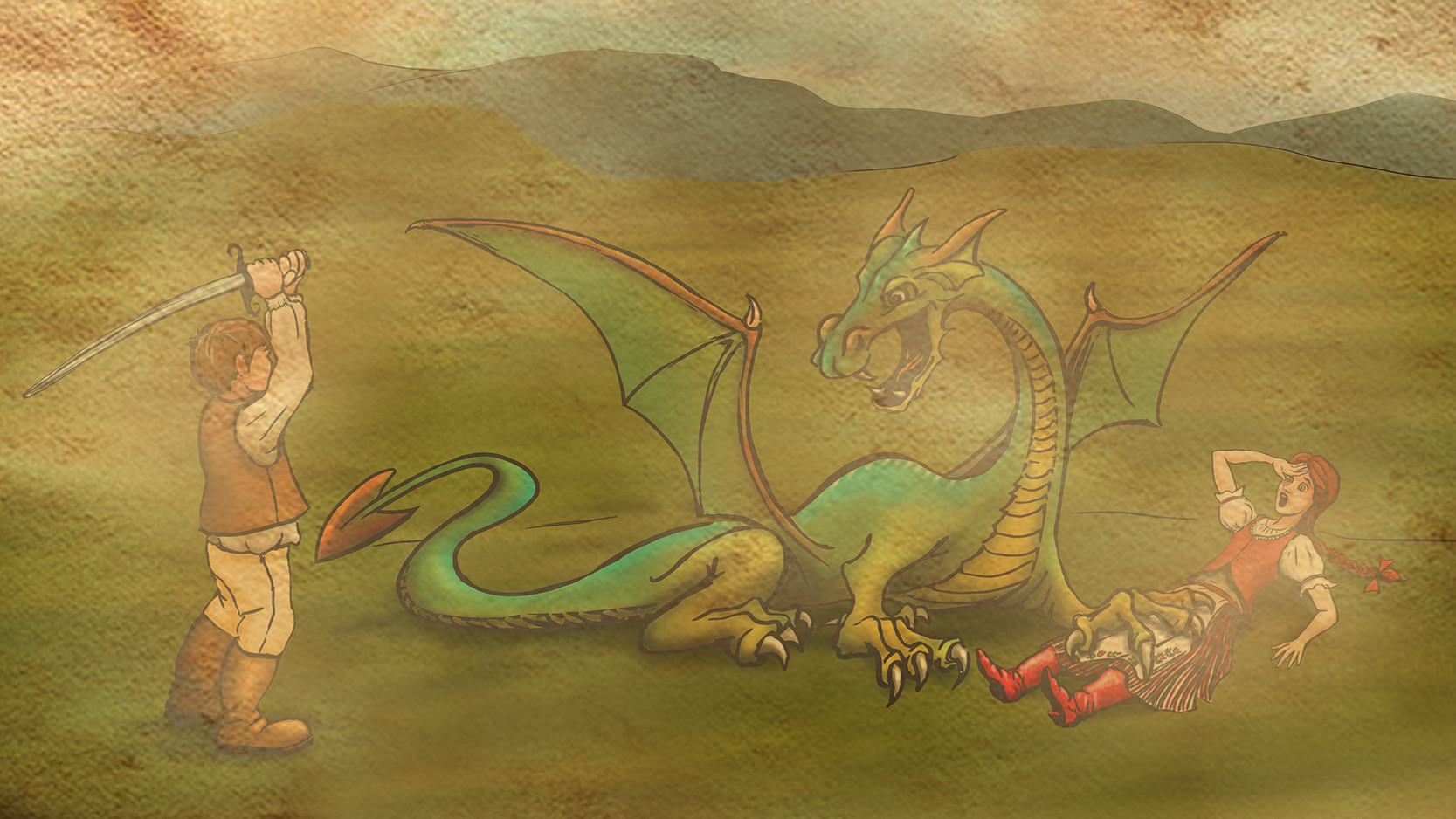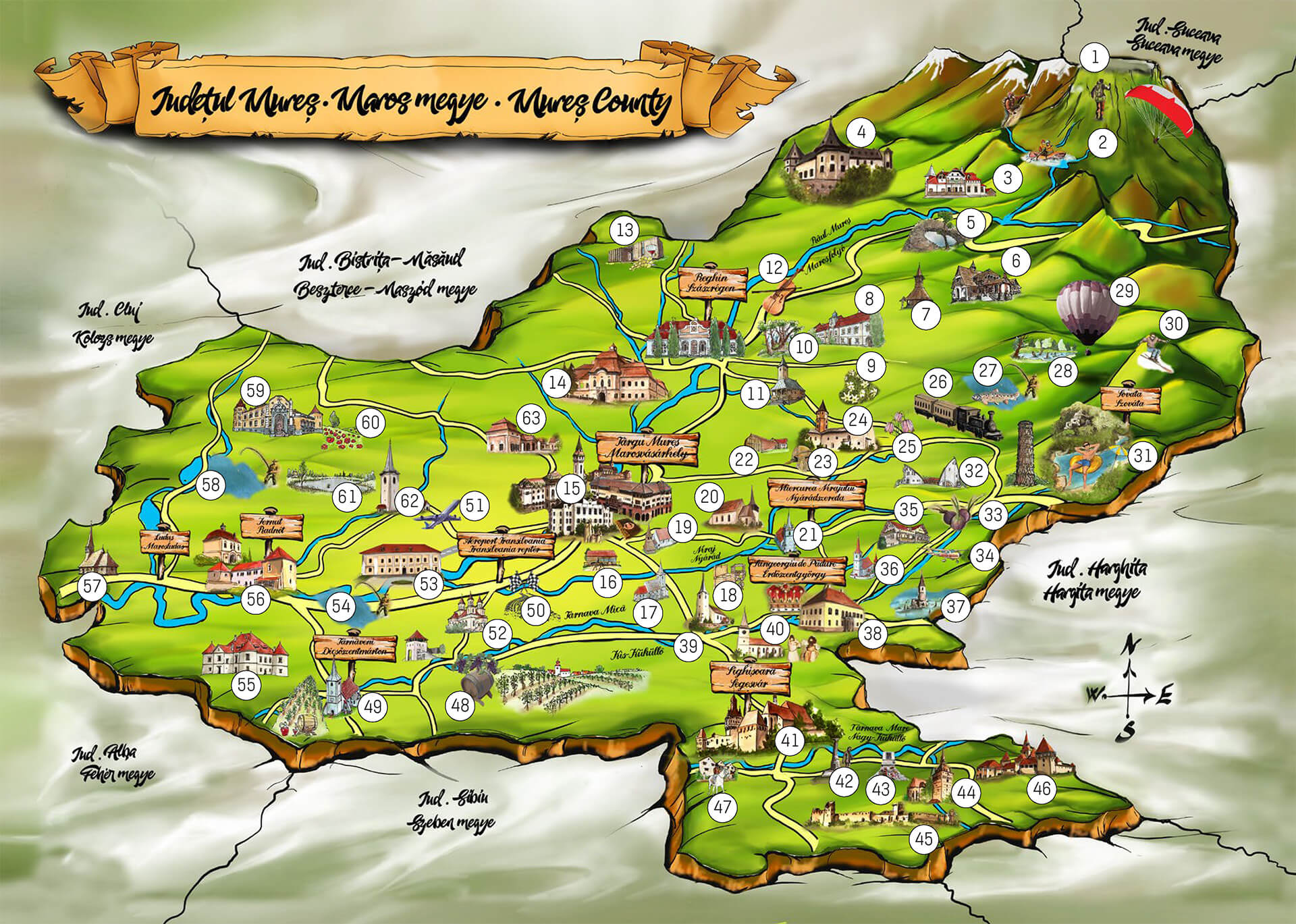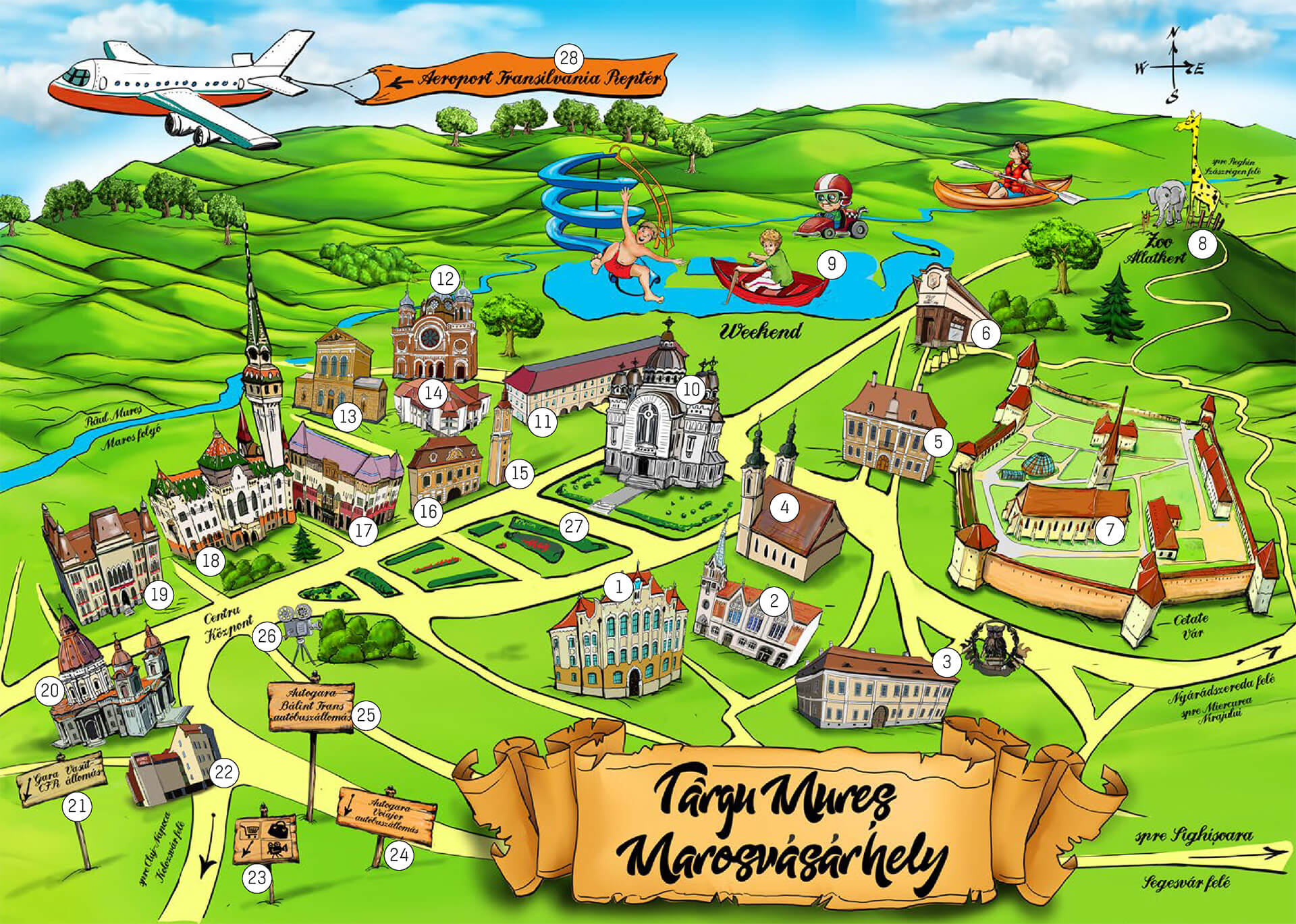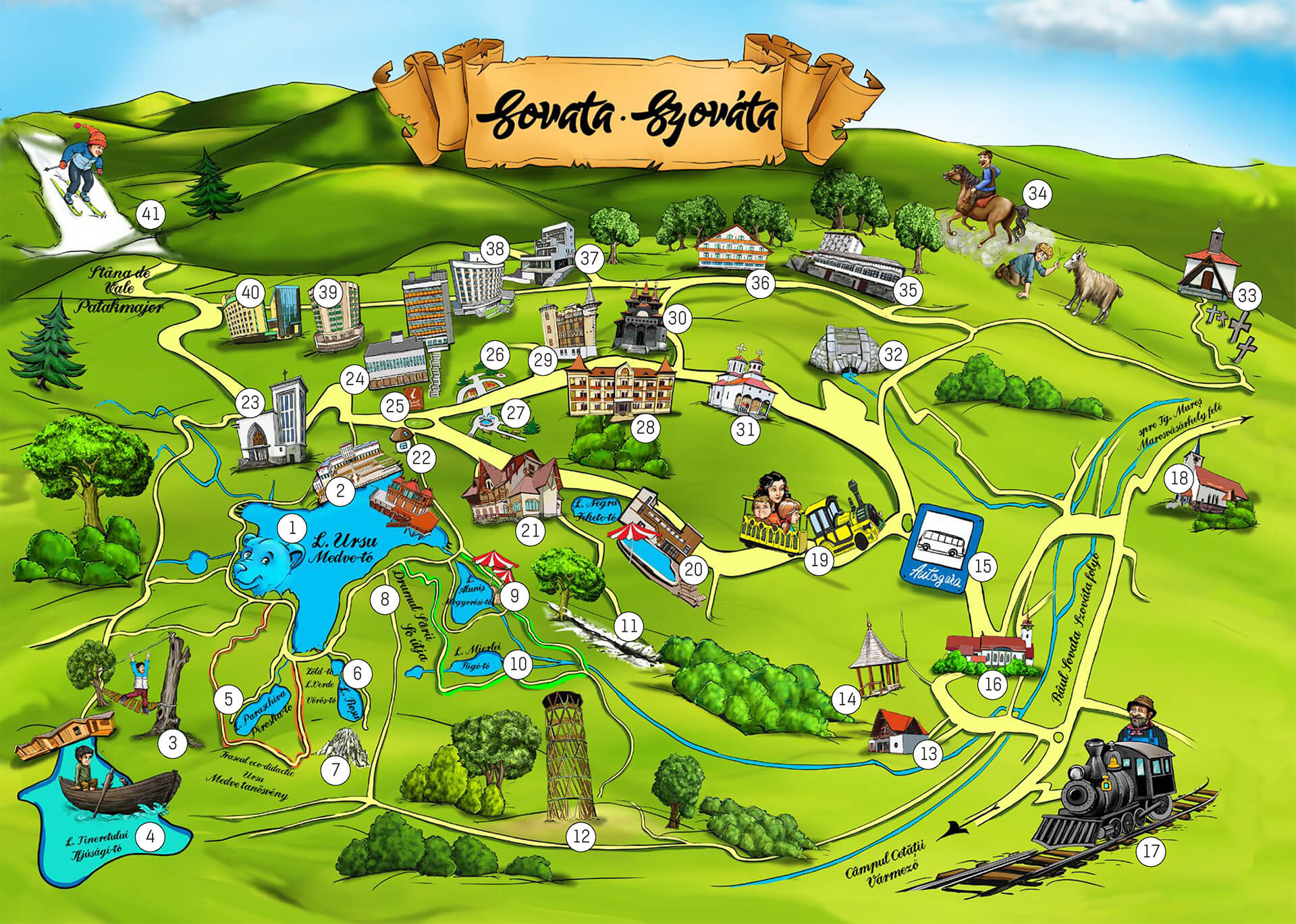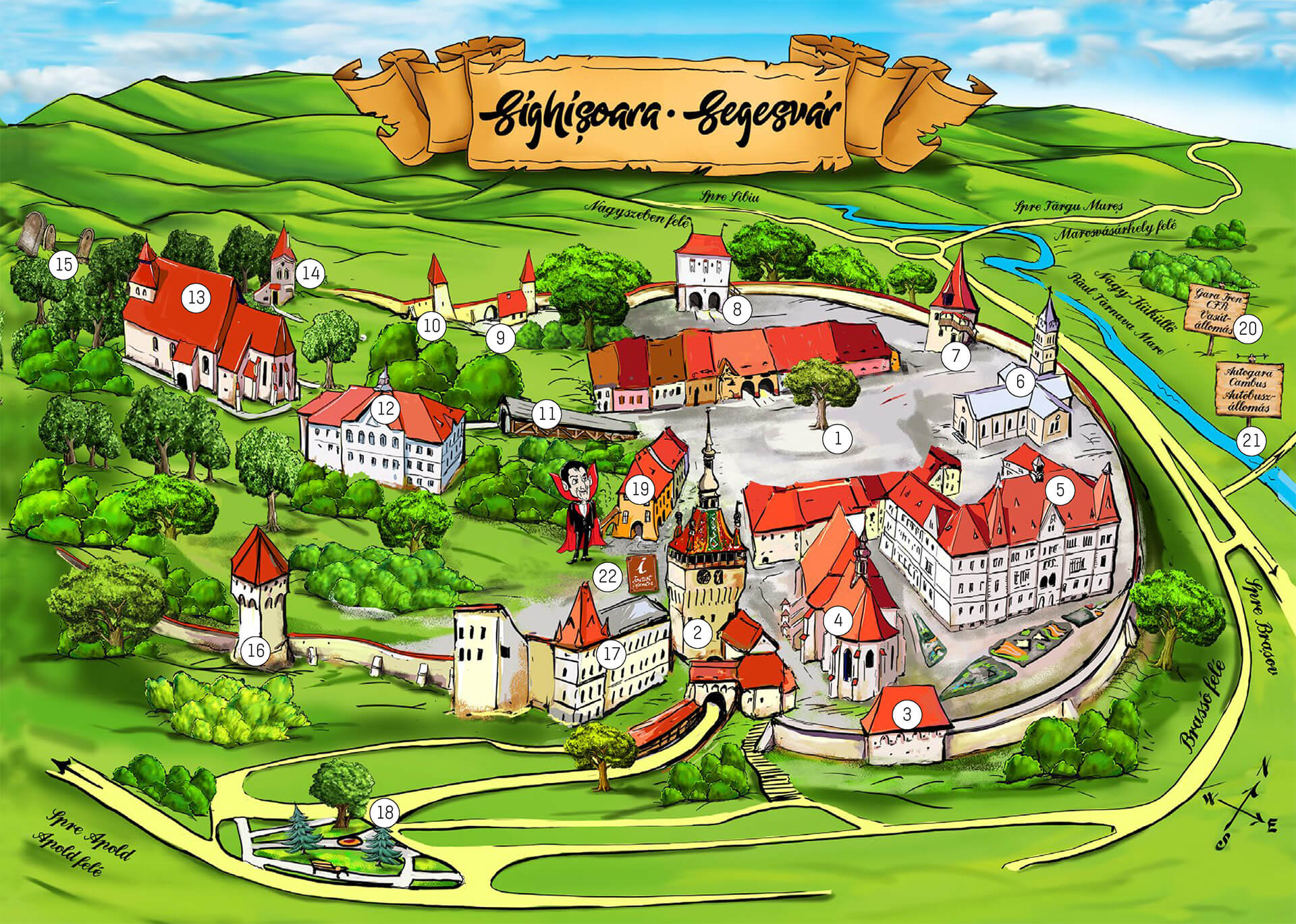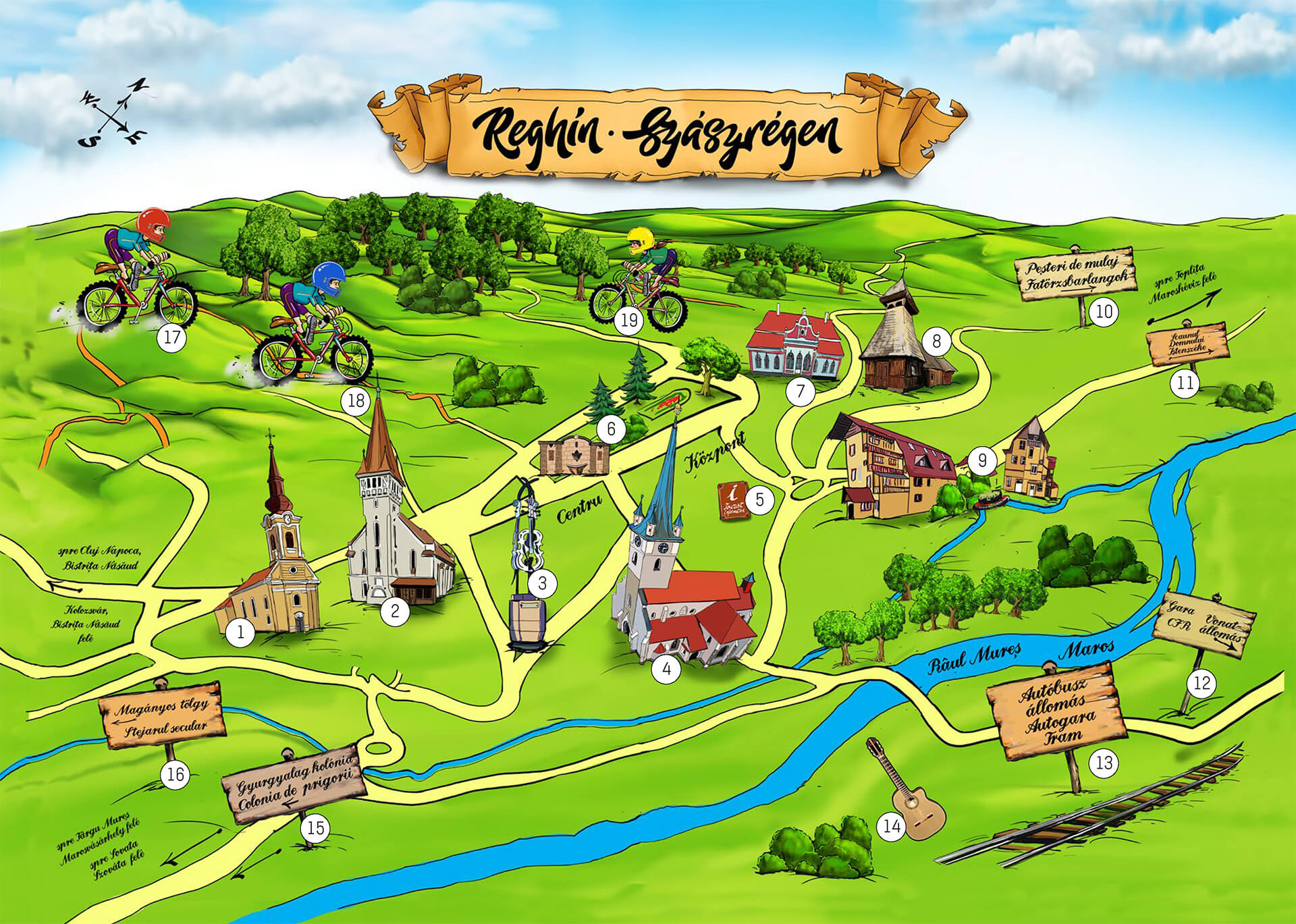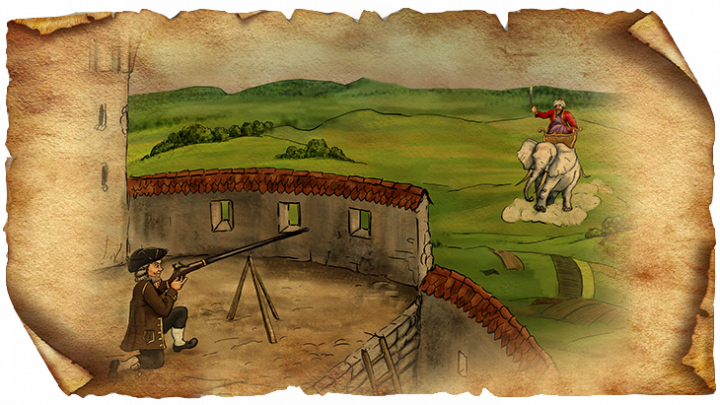
The white elephant of the pasha - Sighișoara
Segesvár is one of the most famous settlements not only in Mures county, but also in Transylvania, thanks to its ancient Saxon buildings, towers, churches, but above all its castle, which is one of the most spectacular and best preserved medieval buildings in our wider area. According to the assumptions Vlad Țepeș, the Prince of Wallachia was born here, more commonly known as Prince Dracula. Over the past centuries, a great number of myths and legends were created around the city and its buildings - one of which dates back to theTurkish times. According to the folk memory, during the Turkish occupation, a pasha marched to Sighisoara with an army to conquer the city. However, the inhabitants of the city were on guard: the tradition says that the leader on the back of the white elephant was noticed from about a thousand meters from the castle, and he was shot from such a huge distance. At the place where the elephant and the pasha died, his soldiers buried him immediately and then fled. The medieval rifle used in the Middle Ages certainly could not be used from a thousand meters, so the story is doubtful. It is true, however, that Sighisoara, mainly inhabited by Saxons, it was attacked, conquered, ravaged several times, its buildings being damaged during the history. It could be devastated by the Turkish, the Kuruc, mercenary soldiers, fires or plague, but Sighisoara still survived. In 1544, the Protestant city fierce Szeklers were beheaded, the fortress walls were assaulted by Michael the Brave, Giorgio Basta, Mózes Székely and Prince János Kemény. Yet, the greatest destruction was caused by the Kuruc troops led by Lekinc Pekry in 1706: five of the original 14 bastions (towers) were destroyed. The remaining nine towers are still standing today, and some of the beautiful old buildings survived the bloody centuries. Coming to the historic castle, the visitor realizes that within the walls, all the buildings and street parts represent museum value. The most impressive attraction is the 64-meter-high Clock Tower built in the 14th century, but the church on the hill and the 175-degree staircase, called student staircase, leading to it are of same importance. If we spend more time at the castle, we can admire all the nine remaining intact towers: besided the Clock Tower, the tower of the blacksmiths, rope-makers, butchers, furriers, tailors, shoemakers, tinners and tanners. The medieval little streets were nicely renovated, as the walk between the Saxon houses surrounded by the castle walls offers a unique experience in Sighisoara. One of the most beautiful buildings on the side streets is the deer house built in the 17th century, which probably preserved the best its original style. The archeologists found surprising artifacts near the city in 1900: they found a skeleton of a huge animal, which for a while was believed to be a fallen pasha elephant, and the myth was believed o be true. But soon it turned out that the animal whose bones were excavated was the ancestor of the steppe bison. The shooting of the enemy from a distance can be familiar from another very real story: on July 31, 1849, during a battle between Sighisoara and Fehéregyháza, Scariatin, the Russian general was hit from far by a cannonball.
Learn more